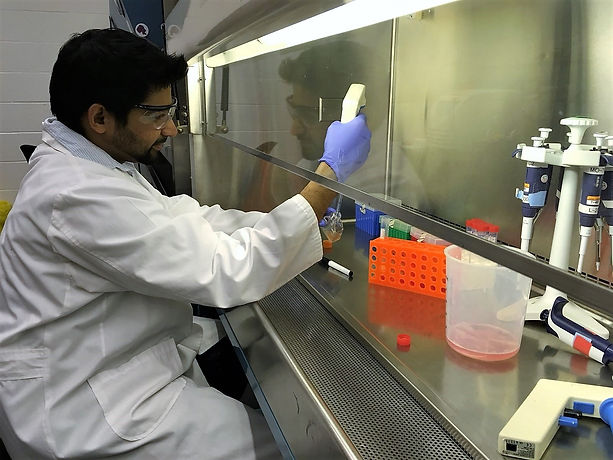
Blood and biological samples, generously provided by anonymous volunteers, helped us test a new concept to harness the immune system to kill HIV hidden in cells in HIV reservoirs. A primary objective of our research was to test the ability of cells known as killer T cells to effectively attack HIV-infected cells. It was important to test samples from several different people living with HIV to learn if our test approach could apply to different populations. Results of this study were published in the Journal of Clinical Investigation Insight, in September 2017.
1) What was the goal of our study?
HAART treatment suppresses the multiplication of HIV but does not kill all HIV-infected cells in the blood and tissue of infected persons. The few cells which remain infected with HIV are referred to as the “latent” or hidden reservoir of HIV. These cells are considered “hidden” because it appears that the immune system is unable to detect and destroy them. If we are able to get the immune system to kill all of these hidden cells of the latent reservoir, we may be able to cure HIV.
The immune system works by a process called “immune recognition”. It alerts killer T cells of the presence of an infection. Killer T cells are white blood cells with an ability to kill infected cells. HIV hijacks the process of immune recognition and disrupts communication between infected cells and killer T cells, allowing some HIV-infected cells to survive. One particular part of the HIV virus, a protein called Nef, plays a critical role in disrupting communication.
We used experimental drugs on cells isolated from patients to see if we could block Nef activity and restore efficient communication between HIV-infected cells and killer T cells.
2) Our findings and limitations / What was learned? What next?
We found that by using these drugs against donated HIV-infected cells in the laboratory, we could improve killer T cell response and improve immune recognition under lab conditions. Killer T cells were able to identify HIV-infected cells specifically, and kill them. Our research is the first to use drugs against the Nef part of HIV and to show improved killer T cell response against HIV-infected cells.
However, while these drugs improved immune recognition, they were not able to get rid of all the HIV. More work will need to be done before we can use these drugs in real clinic therapy or ask people to be exposed to the drugs. Our next step is to test Nef-targeting drugs in tests with animals models







